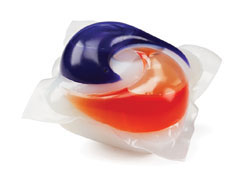The
American Association of Poison Control Centers (AAPCC) works with multiple
poison control centers all over the country to help gather data on poisonings
and their causes. To reach the AAPCC you can call 1-800-222-1222. There are
eight alerts that the American Association Poison Control Centers lists. These
eight are bath salts, current annual highlights (which will be broken down and explained later), e-cigarettes, food poisoning, hand sanitizer, laundry
detergent packets, opioid medications, and synthetic cannabinoids. These alerts
were compiled from the 2.9 million calls received by the AAPCC in 2014. 50
percent of the people that were exposed were children younger than six and
older with the next highest groups being adults between the ages of 20 and 59
that were exposed at 28 percent, adults 60 and older as well as teenagers both
were exposed at the eight percent, and finally children ranging in ages six to
12 rounded out the distribution at six percent. These would match with some of the
alerts since most young kids like to stick whatever they can find in their
mouths so things like hand sanitizer and laundry detergent packets would be one
of the reasons these young children could poisoned. Also adults 20-59 are
maturing and going from experimenting with e-cigarettes and synthetic cannabinoids
in college which can both be very poisonous; to when they first start to take prescription
drugs as they age would lead to possible overdose of the opioid medications.
The statistics support these claims because 79 percent of exposures are
unintentional, and 79 percent of the routes of exposures are ingestion. The
other routes of exposure are dermal at seven percent, inhalation at six
percent, ocular at four percent, and bites/sting and other/unknown both at two
percent. The other reasons for exposure are intentional at 17 percent, and
adverse reaction and unknown/other both at two percent.
All
of these reasons is why the people answering the phone at poison control are
either doctors, nurses, or pharmacists so that the person has the knowledge to
quickly help those calling. 71 percent of those calling because of exposure are
calling from home while 21 percent are calling from a health care facility and
just eight percent are calling from a school, workplace, or unknown location. 75
percent of the calls are exposures from humans meaning humans are the cause of
the poisoning. 23 percent of the calls into the center are questions about
medications meaning no one is exposed to anything. Rounding out this list would
be the two percent that calling due to exposure from an animal/insect sting or
bite. In the top 10 exposure categories by each age group analgesics come
within the top three of each age group. The top 10 exposures for all human exposures
rank in the following order: analgesics, cosmetics, household cleaning substances,
sedative/hypnotics/antipsychotics, antidepressants, antihistamines,
cardiovascular drugs, foreign bodies/toys, pesticides, and topical
preparations. Pediatric exposures top 10 is: cosmetics, household cleaning
substances, analgesics, foreign bodies/toys, topical preparations, vitamins,
antihistamines, pesticides, gastrointestinal preparations, plants. Adult
exposures top 10 is: analgesics, sedative/hypnotics/antipsychotics,
antidepressants, cardiovascular drugs, household cleaning substances, alcohols,
anticonvulsants, pesticides, bites and envenomation, and antihistamines. There is
a lot of overlap in all these lists which would help to support the data from
the route and reason for exposure graphs because most of these would have to be
ingested and especially in the pediatric category they would be ingested unintentionally.
These
alerts and top 10 substances can all be very dangerous, so it is a good thing
that there is a number people can call to get help they need to potentially
save their life or the life of a loved one. A website like AAPCC is also helpful
for people who are studying toxicology because it gives them a resource to see
the current problems to study further.


